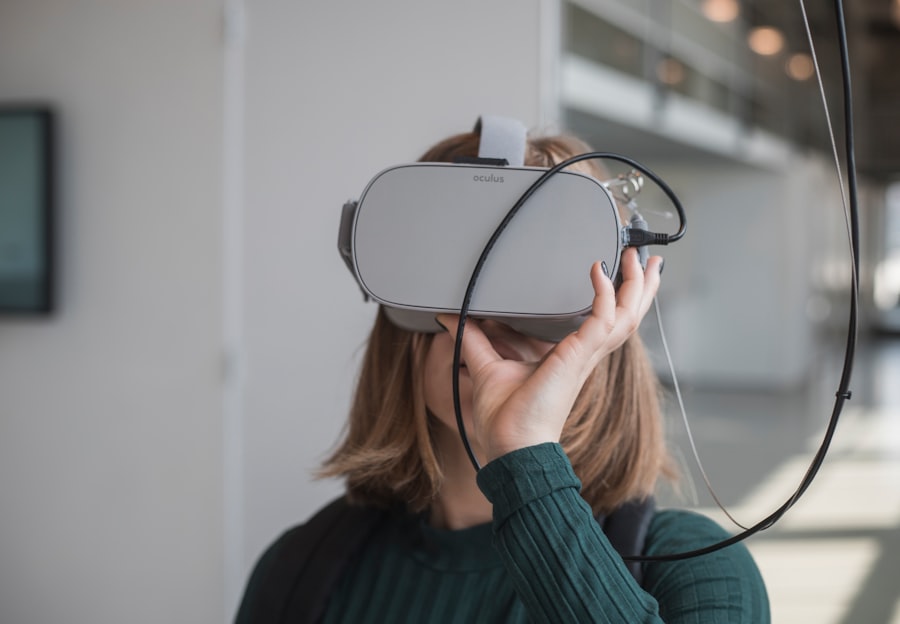Educational gaming, also known as serious games, is a rapidly expanding field that combines the engaging and immersive qualities of video games with educational content. This approach to learning has gained traction in recent years as educators and researchers recognize the potential of games to enhance the learning experience. Educational games are designed to teach specific skills or concepts across a wide range of subjects, including mathematics, science, history, and language arts.
By incorporating game elements such as challenges, rewards, and interactive storytelling, educational gaming aims to make learning more enjoyable and effective for students of all ages. The integration of digital technology has made educational games more accessible, allowing students to engage with educational content in an interactive manner. As the demand for digital learning tools grows, educational gaming is positioned to play a significant role in shaping the future of education.
This article will examine current trends, the impact of technology, innovations, the role of gamification, challenges and opportunities, and predictions for the future of educational gaming.
Key Takeaways
- Educational gaming is a growing field that uses games to enhance learning and engagement in educational settings.
- Current trends in educational gaming include the use of virtual reality, augmented reality, and mobile gaming to create immersive learning experiences.
- Technology has had a significant impact on educational gaming, allowing for personalized learning experiences and real-time feedback for students.
- Innovations in educational gaming include the use of artificial intelligence, adaptive learning, and gamified simulations to improve learning outcomes.
- Gamification in education involves using game design elements to make learning more interactive and enjoyable, leading to increased motivation and engagement among students.
- Challenges in educational gaming include the need for effective assessment tools and the potential for over-reliance on technology, while opportunities include the ability to reach diverse learners and create more inclusive learning environments.
- The future of educational gaming is predicted to involve more personalized and adaptive learning experiences, as well as increased collaboration between educators and game developers to create high-quality educational games. Recommendations include the need for continued research and development in the field of educational gaming.
Current Trends in Educational Gaming
Immersive Learning Experiences with VR and AR
Virtual reality (VR) and augmented reality (AR) are revolutionizing the way we learn by creating immersive and interactive educational experiences. These technologies enable students to explore virtual environments, interact with digital content, and engage with complex concepts in a more meaningful way. By transporting students to historical events, distant planets, or microscopic worlds, VR and AR educational games can provide a level of engagement and understanding that traditional teaching methods cannot match.
Accessibility and Convenience through Online Platforms and Mobile Apps
The integration of educational games into online learning platforms and mobile apps is making it easier for students to access educational content anytime, anywhere. This trend has been accelerated by the shift towards remote and hybrid learning models, as educators seek new ways to engage students in a digital environment. With online platforms and mobile apps, students can learn at their own pace, review material, and access additional resources with ease.
Personalized Learning through Game-Based Assessments and Adaptive Learning
Game-based assessments and adaptive learning are transforming the way we evaluate student knowledge and skills. Interactive challenges and simulations provide a more engaging alternative to traditional tests, while adaptive learning games adjust their difficulty level based on the student’s performance, providing personalized learning experiences that cater to individual strengths and weaknesses. These innovations reflect a broader shift towards personalized and experiential learning in education, as educators seek to meet the diverse needs of today’s students.
The Impact of Technology on Educational Gaming

The impact of technology on educational gaming has been profound, driving innovation and expanding the possibilities for interactive learning experiences. The widespread availability of digital devices such as computers, tablets, and smartphones has made educational games more accessible to students around the world. This has opened up new opportunities for reaching learners in remote or underserved areas, as well as those with diverse learning needs.
Additionally, advancements in graphics, sound, and user interface design have enhanced the immersive quality of educational games, making them more engaging and effective as learning tools. Moreover, the rise of artificial intelligence (AI) and machine learning has enabled the development of more sophisticated educational games that can adapt to individual student needs. AI-powered educational games can analyze student performance data in real-time and provide personalized feedback and support, helping students stay motivated and on track with their learning goals.
Furthermore, cloud computing has made it easier for educators to create, distribute, and update educational games, reducing barriers to entry for game developers and allowing for more frequent updates and improvements to content. In addition, the integration of social features in educational gaming has allowed for collaborative learning experiences and peer-to-peer interaction. Students can work together on challenges, share achievements, and communicate with each other within the game environment, fostering a sense of community and teamwork.
This social aspect of educational gaming can help students develop important social and emotional skills while also enhancing their academic learning.
Innovations in Educational Gaming
Innovations in educational gaming are driving the development of new approaches to teaching and learning that are more engaging and effective. One such innovation is the use of storytelling and narrative-driven gameplay to convey educational content. By integrating compelling narratives and characters into educational games, developers can create immersive experiences that captivate students’ attention and make learning more memorable.
This approach can be particularly effective for teaching subjects such as history, literature, and social studies, where storytelling plays a central role in conveying information. Another innovation is the use of game-based simulations to teach complex skills and concepts in a realistic and interactive way. Simulations allow students to apply their knowledge in practical scenarios, such as conducting scientific experiments, managing a business, or solving real-world problems.
This hands-on approach to learning can help students develop critical thinking skills, problem-solving abilities, and a deeper understanding of complex concepts. Furthermore, there is a growing focus on inclusive design in educational gaming, with developers striving to create games that are accessible to students with diverse learning needs. This includes features such as customizable difficulty levels, audiovisual options for different learning styles, and support for assistive technologies.
By making educational games more inclusive, developers can ensure that all students have the opportunity to benefit from these innovative learning tools.
The Role of Gamification in Education
Gamification is the application of game design principles and mechanics to non-game contexts, such as education, to motivate participation, engagement, and loyalty. In education, gamification is used to make learning more enjoyable and rewarding by incorporating elements such as points, badges, leaderboards, and challenges into the learning experience. By introducing these game elements into educational activities, educators can increase student motivation, engagement, and retention of knowledge.
One way gamification is being used in education is through the implementation of game-based rewards systems. Students earn points or badges for completing tasks or demonstrating mastery of skills, providing them with a sense of achievement and progress. These rewards can be used to incentivize desired behaviors such as active participation in class discussions, completion of homework assignments, or improvement in academic performance.
By tapping into students’ natural desire for recognition and accomplishment, gamification can help foster a positive learning environment and encourage students to take an active role in their own education. Another application of gamification in education is through the use of game-based challenges and quests to promote active learning. Educators can design quests that require students to solve problems, conduct research, or complete tasks related to the curriculum.
By framing these activities as exciting challenges with clear objectives and rewards, educators can inspire students to take a more proactive approach to their learning. This approach can help students develop important skills such as critical thinking, creativity, and collaboration while also deepening their understanding of academic content.
Challenges and Opportunities in Educational Gaming

While educational gaming holds great promise for transforming education, it also presents several challenges that must be addressed to realize its full potential. One challenge is ensuring that educational games are aligned with curriculum standards and learning objectives. Educators must carefully evaluate educational games to ensure that they effectively teach the required content and skills while also meeting the diverse needs of their students.
Additionally, there is a need for ongoing professional development for educators to effectively integrate educational games into their teaching practices and leverage them as powerful learning tools. Another challenge is addressing issues of equity and access in educational gaming. Not all students have equal access to digital devices or high-speed internet connections, which can create disparities in their ability to engage with educational games.
Educators must work to ensure that all students have access to the necessary technology and support to benefit from educational gaming experiences. Furthermore, developers must strive to create inclusive and accessible games that accommodate diverse learning needs and abilities. Despite these challenges, there are numerous opportunities for leveraging educational gaming to enhance teaching and learning.
Educational games have the potential to engage students in active learning experiences that promote deeper understanding and retention of knowledge. They can also provide valuable data insights into student performance and learning preferences, allowing educators to tailor instruction to meet individual needs more effectively. Additionally, educational gaming can help foster important 21st-century skills such as problem-solving, collaboration, digital literacy, and creativity that are essential for success in today’s rapidly evolving world.
The Future of Educational Gaming: Predictions and Recommendations
Looking ahead, the future of educational gaming holds great promise for transforming education by providing more engaging, personalized, and effective learning experiences. As technology continues to advance, we can expect to see even more immersive and interactive educational games that leverage virtual reality, artificial intelligence, and other cutting-edge technologies. These advancements will enable educators to create highly engaging learning experiences that cater to diverse learning styles and abilities.
To realize the full potential of educational gaming, it will be important for educators, developers, policymakers, and researchers to collaborate in advancing best practices for integrating educational games into teaching and learning. This includes providing professional development opportunities for educators to build their capacity in using educational games effectively in the classroom. Additionally, there is a need for continued research into the impact of educational gaming on student outcomes and best practices for designing high-quality educational games that align with curriculum standards.
In conclusion, educational gaming has the potential to revolutionize education by providing more engaging, personalized, and effective learning experiences for students. By leveraging technology, innovative design principles, and gamification strategies, educators can harness the power of educational gaming to inspire curiosity, foster critical thinking skills, and promote lifelong learning. As we look towards the future of education, it is clear that educational gaming will play an increasingly important role in shaping the way we teach and learn.




